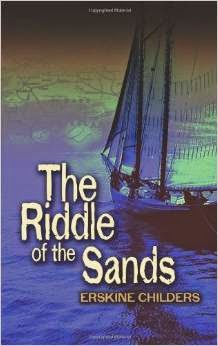 |
| Alex with his pinhole camera contraption. It worked! |
Syzygy, aurora, eclipse, meteors and more!
The Ides of March has a bad reputation but it passed unnoticed this year; and this month we also had a Friday the 13th, which some people are rather superstitious about. But that came and went without much ado as well. We got lucky with weather overall as St. Patrick's Day was dry and not too cold. The parades, especially in Newport, were great fun, and there were only two ankle injuries during the ritual sunrise climb of Croagh Patrick. No, I did not climb. Done it once.
The highest tides in the spring are always around St. Patrick's, Day and this year they were a couple of days later. We live by the sea so we are used to tidal variation. I suppose that's an understatement in that we live on a one lane road by the sea which is under water during the big spring tides for an hour either side of the high tide mark.
 |
| Supertides predicted for the weekend after syzygy. |
This year, we were preparing for syzygy, where the sun and moon align to create supertides much higher than normally expected. Due to this rare alignment between the sun, Earth and moon, and the moon's close proximity to Earth, the tides on Saturday off the coast of northern France and southwestern England were the highest reported since 1997. Called a 'tide of the century', the phenomenon caused surges of up to 46 feet high and renders Mont St Michel an island for a brief interval. Despite its name, the "tide of the century" takes place every 18 years or so.
 |
| Mont Saint Michel causeway cut off by the high water in France |
 |
| An almost full eclipse of the sun. |
Fortunately for us the weather was to be benign where we were, because whenever the gales blow in from the west, as they invariably do in the West of Ireland, they pile up the water in the bay much higher than it normally would go on its own. So not only does it get higher than normal, it stays high longer than normal, making it difficult to get home if you missed your window of opportunity and impossible to leave if you need to for a couple of hours either side of the time of the highest tide. Any kind of outside activity requires careful planning. Naturally, if you are out on a boat and anchored, your scope will have to be adjusted for the change in the water's depth. Armed with tide tables, we were prepared.
 |
Furlong and Inishloy, normally islands, were
connected to the mainland at super low tide. |
We did get the lowest tide we've seen in a long long time, which connected the islands, Furlong and Inishloy, to the mainland at Ross and uncovered large and delectable cloisins for picking, which you normally cannot get to under water. But the super high tide didn't really materialize. We waited, we watched and nada. It did not even go over the road until the 22nd when we were on our way home after an exhausting weekend of working on the boat in Galway, naturally. All we wanted to do was go home, and all we could do is wait for it to recede. Not too bad. I reckon it's because all the water got sucked over to the southwestern France and England, where people gathered to watch the rare phenomenon and to surf standing waves caused by it.
 |
| Cloisins fill a bucket ready for cooking up! |
But that was not all. We not only had extraordinary tides at the spring equinox, but also a meteor crashing through our atmosphere in the dead of night, a total eclipse (well 95% here), and massive coronal mass ejections causing amazing aurora borealis displays and interfered with radio transmission.
 |
| Foraging for cloisins and winkles along the shore. |
We were fortunate the morning of the eclipse. The weather by us was perfectly clear, yet a mile towards Westport it was completely socked in with fog. Alex made us a very nice viewing device and we enjoyed the morning sunshine until it got eerily quiet and noticeably grayer at the height of the eclipse. The birds stopped flitting and singing for a few minutes while they decided if the apocalypse was today or not. (It wasn't.)
Unfortunately, we never did sea the aurora as far south as we are but they did catch an amazing display up in Donegal. Maybe one day we will, too.
So it was quite an eventful March for us this year. And there are more astronomical events heading our way. So hand on, we're in for an interesting ride this year!
 |
| Meteor over the northern skies of Ireland. |
Above is an amazing photo taken from Achill Island in County Mayo Ireland of the meteor. It actually caused numerous calls to 112/999, the emergency services here, and Achill Island Lifeboat was on alert. And below is Noel Keating's Aurora photos over Slieve League, Europe's highest cliffs, in Donegal. All in all, it was quite the month, and thankfully we did not have the snow that blanketed the East Coast of the US in a deep freeze.
This preponderance of natural phenomena was unusual this month. Perhaps it will call attention to the world around us and cause the gaze to return to the sky rather than on the screen. (She says as she types these words onto her screen.)










Comments
Post a Comment